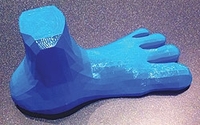Jim Elms and Peter Mears are fast, brave, decisive and simple

When Jim Elms and Peter Mears took on their new roles at
Initiative last February the task was two-fold: reinvigorate a global media shop that had stumbled a bit while simultaneously integrating the roughly $1 billion media operation of sibling agency
Draftfcb.
They didn’t waste any time injecting change into the organization. After a quick assessment they streamlined
the agency’s planning process and introduced a new set of operating principles — in effect creating a new agency culture. And they convinced every one of Draftfcb’s media clients to
make the transition to Initiative, which accounted for approximately $30 million in additional revenue.
advertisement
advertisement
And while managing all the
internal change, the agency also found a way to reel in big new clients like Amazon, Reckitt Benckiser and Sony Music.
For
their quick, bold and effective efforts Elms, Initiative’s global CEO, and Mears, North American CEO, have been named MEDIA magazine’s Executives of the Year.
Quick and bold in fact are part of the agency’s new mantra. Both Elms and Mears realized quickly that Initiative needed a culture change
— a different attitude and method to the way all agency staffers conduct business both internally and externally. What they came up with to express that change was a new set of unifying
principles that focused on being “Fast, Brave, Decisive and Simple.”
What that boils down to is a streamlined
approach to everything the agency does, from planning client media and marketing efforts to new business pitches and even to the way internal meetings are conducted.
PowerPoint presentations, for example have been banned from the agency. The reason? Because there are more engaging ways to communicate ideas.
Now, there is much more reliance on video. And meetings at the agency, worldwide, are now shorter — typically 40 minutes. And if you call a meeting, you better be prepared to conduct it and also
articulate at the end of it what the resulting “action items” are, said Elms.
The “Brave” part
largely has to do with client interaction, said Mears. “It means having an open and frank dialog with clients,” he said. “We’re going to challenge you and give it to you
straight and tell you what we believe,” which is not always easy, he said.
The planning process has been reduced to two
essential tools — from dozens that were previously used. Those tools can be used to create a client game plan in two to three days, versus the three to four weeks that were previously the
norm.
Reducing the essential tool set was critical to realizing the “fast” and “simple” elements of
the agency’s new approach, said Elms. “You can’t have two-dozen tools and 22 steps,” and maneuver effectively in today’s marketplace, he said. “It’s got to be
two important tools and a really well-managed time line.”
The shop’s key arsenal now boils down to a consumer
insights tool called Real Lives which is matched with media-mix software called Matrix. Between the two, the agency can quickly map out a plan for most clients. And if refinements are necessary the
agency has a number of optimizers and other tools that used to be part of the main process to employ.
The “Fast Brave Decisive
Simple” approach initially sprang from a presentation for Unilever in which the agency pitched a “Barefoot Running” concept. Essentially that meant a “getting back to the roots
and demystifying what we had created” approach, said Elms. The pitch went over big with Unilever, which awarded the agency significantly more of its business including communications planning
duties for their Homecare unit.
After that the task was to define how a “Barefoot Running” agency would conduct itself on an
ongoing basis. Agency teams were brought together and given stacks of cards with adjectives and the teams had to select those words they felt best described such an agency. Fast, brave, decisive and
simple were the predominate choices.
With that, “we knew we had something that was real and that people would respond to,”
Elms said. FBDS has spilled over to the pitch process as well. At chemistry meetings the shop uses placemats — tailored to the prospect — to introduce itself, key staff, operating
principles and planning approaches. Those are items that used to be just one more slide on a PowerPoint deck, now expressed in a more creative manner.
According to Mears, the FBDS approach will never be completely finished. “It’s about 85 percent complete,” he says. “That gives us the flexibility to
evolve, rather than being a perfectly baked thing.”
 And, speaking of imperfections, the company’s so-called “Future Board,” comprised of Initiative up-and-comers who help shape the direction of the agency,
devised an award — a 3D-printed blue four-toed bare foot that’s bestowed monthly to an individual that best imbues the spirit of FBDS. Staffers are nominated by their peers, via social
media, in 140 characters or less.
And, speaking of imperfections, the company’s so-called “Future Board,” comprised of Initiative up-and-comers who help shape the direction of the agency,
devised an award — a 3D-printed blue four-toed bare foot that’s bestowed monthly to an individual that best imbues the spirit of FBDS. Staffers are nominated by their peers, via social
media, in 140 characters or less.
If you’re going to change a culture, it helps if you enlist input from the troops, which is what
Elms and Mears have done throughout the year. Also, have some fun with it. The four-toed foot award is one example.
The flip side to
staff input is giving up some control. There is no uniform look to FBDS. Staffers are free to design individual logos and digital email signatures expressing in their own way the new culture.
The one caveat is the letters FBDS have to be part of it. “As long as it inspires them in their work,” said Elms.
Adds
Mears: “We have consistent principals with a local expression. It’s a bit like clients operate.”